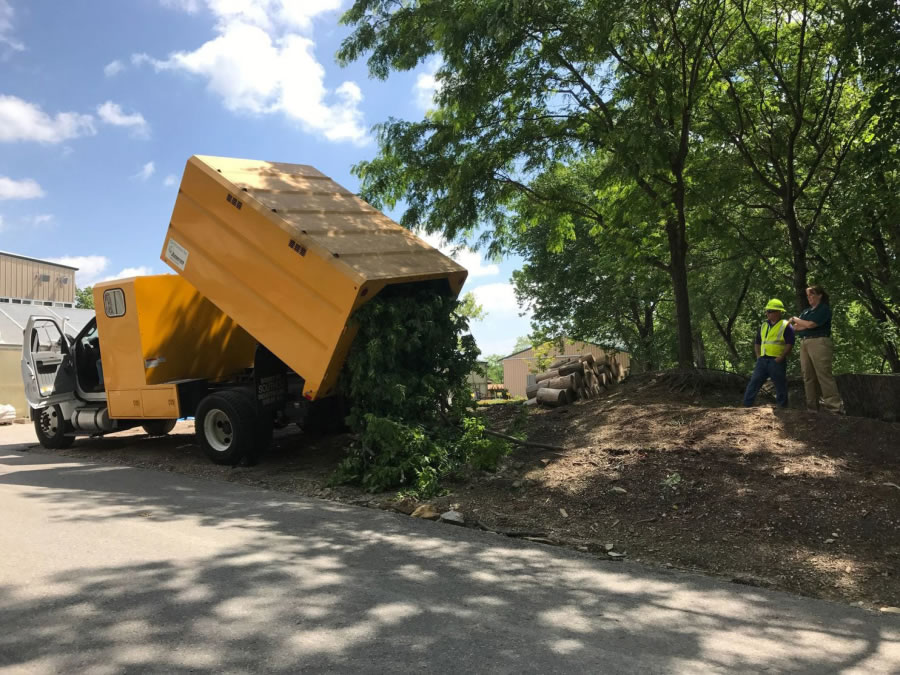PHILADELPHIA — Some humans consider mulberry trees little more than oversize weeds, but Stella the giraffe loves them. Her long, gray tongue snakes around the leaves and plucks them from their branches with elegant efficiency.
Stella’s mother, Abby, strolls over for her share, and the Philadelphia Zoo’s two female giraffes quickly strip the handful of branches, consuming approximately a pound of leaves in mere minutes. Fortunately, the zoo has plenty of the snack, thanks in part to an unusual source: the local power company.
Utility companies routinely trim trees to keep branches from damaging power lines and causing outages, and usually the clippings end up in landfills or are ground into mulch. But in recent years, a growing number of regional energy providers have begun donating the collected roughage to zoos, whose hungry animals are happy to gobble up the green, leafy tree branches known as “browse.”
Browse partnerships between zoos and power companies are one example of the creative and sometimes unexpected ways zoos work with local organizations to meet animals’ particular – and often enormous – dietary needs. Grocery store chains and restaurants sell or donate greens, fruits and vegetables to zoos, and local landowners, botanic gardens and nurseries also provide plant material. But utility companies are in the singular position of needing to regularly cut back branches that they cannot use themselves.



